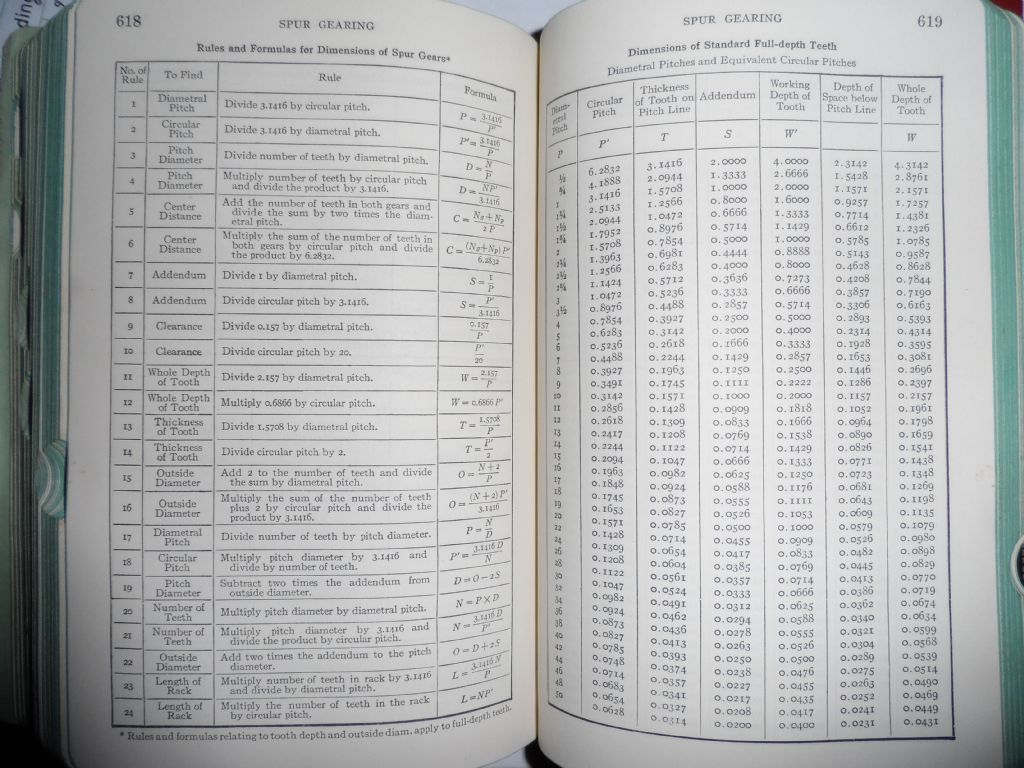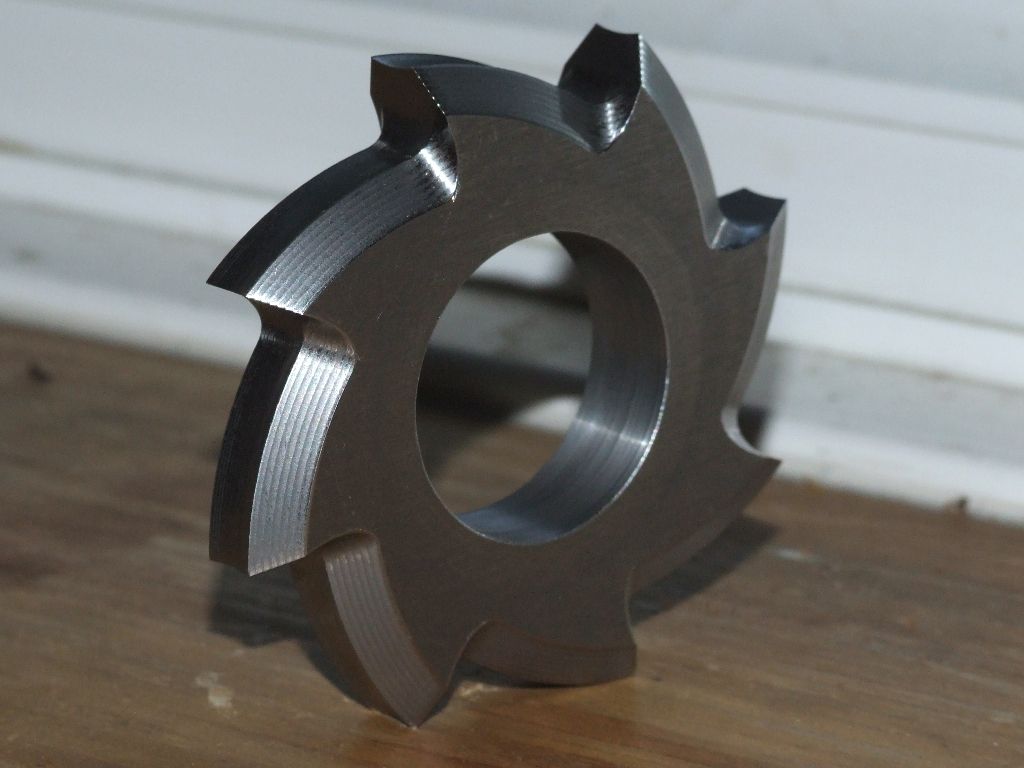Hey Guys. Top o the morning to ya. Just had breckie and am now thinking about beginning to tackle some of the outstanding issues on my Zyto. So Brian Wood has mentioned in a previous post that he believes that the Zyto uses the same 20 DP as the Myford ML 2/4 but he was unsure if they have the same bore. I've measured a few gears now and i get a small variance but i estimate the reading to be 0.6220 which is just under the 5/8" which is written as 0.625 in the Machinery Handbook in the table on page 1740. So as my digital vernier isnt especially great i am going to accept for the time being that the bore is indeed 5/8" and the same as the Myfords.
Now I need to tackle the Diametral Pitch (DP). Defined as being the Ratio of the number of teeth to the number of inches of pitch diameter – equals number of gear teeth to each inch of pitch diameter.
So taking a small 25 tooth gear as an example we have :- 25
Now measuring the outside diameter of the teeth I get approximately 1.345 which works out to be just over 1 11/32" but also very close to 1.375 which is 1 3/8" ! However i also estimate the Whole Depth to be 7/64 as per my M&W Analoge depth gauge. Its the only thing ive got slim enough to fit the gear teeth. Now i can devide this by two to get the addendium and then subtract that twice from the OD but as the Addendium and Dedendum equal the working depth then its pointless and Im just going to subtract the whole depth from the OD once to get my Pitch Circle. Ok i realise the true Pitch circle should be the OD -(Addendium x2) but as my Measurement of the whole depth is likely of by a margin as I don't think its quite reaching the bottom of the tooth whole depth and is in fact closer to the working depth then I'm fairly close to being on the money. So ..
1 11/32 – 7/64 or 1 22/64 – 7/64 = 1 15/64 OK so..
OR
1 3/8 – 7/64 or 1 24/64 – 7/64 = 1 17/64 lets call it 1 16/64"
1 16/64 = 1 8/32 or 1 4/16 or 1 2/8 or 1 1/4
Now where was I. Umm The ratio thats it.
So. 25 : 1 1/4 ?
Therefore 25 teeth : 1 1/4"
so 25 : 1.25"
Therfore 25 / 1.25 = 20 DP
Well iwent round the houses with that but its the first time i worked out the DP of a gear so i just wrote my thoughts. However the V over IR or A is true for all formulae, for all maths as far as i know. The all seeing eye right enough.
So where am i now ! Umm Well ive confirmed that Brian was accurate in his information and ive got a bit more confidence in a myford gear fitting my Zyto if i buy one. Ideally id like to make my own but im a ways from that yet and TBH i doubt i can make them for the cost it takes to buy them. Even a cast iron blank is going to be expensive let alone the tooling, time, postage etc.
So I need to get on with painting next but before i go can anyone recommend a cheep supplier for Nickel thats not going to ask for minimum order or silly money for postage. Im in a bit of a pickle with work at the moment or the lack thereoff ! :/
Have fun guys and chill out to some relaxing sounds.
Paul Kennedy.


 Ahhh i will be ranting about fibonachi and pine cones next
Ahhh i will be ranting about fibonachi and pine cones next 



